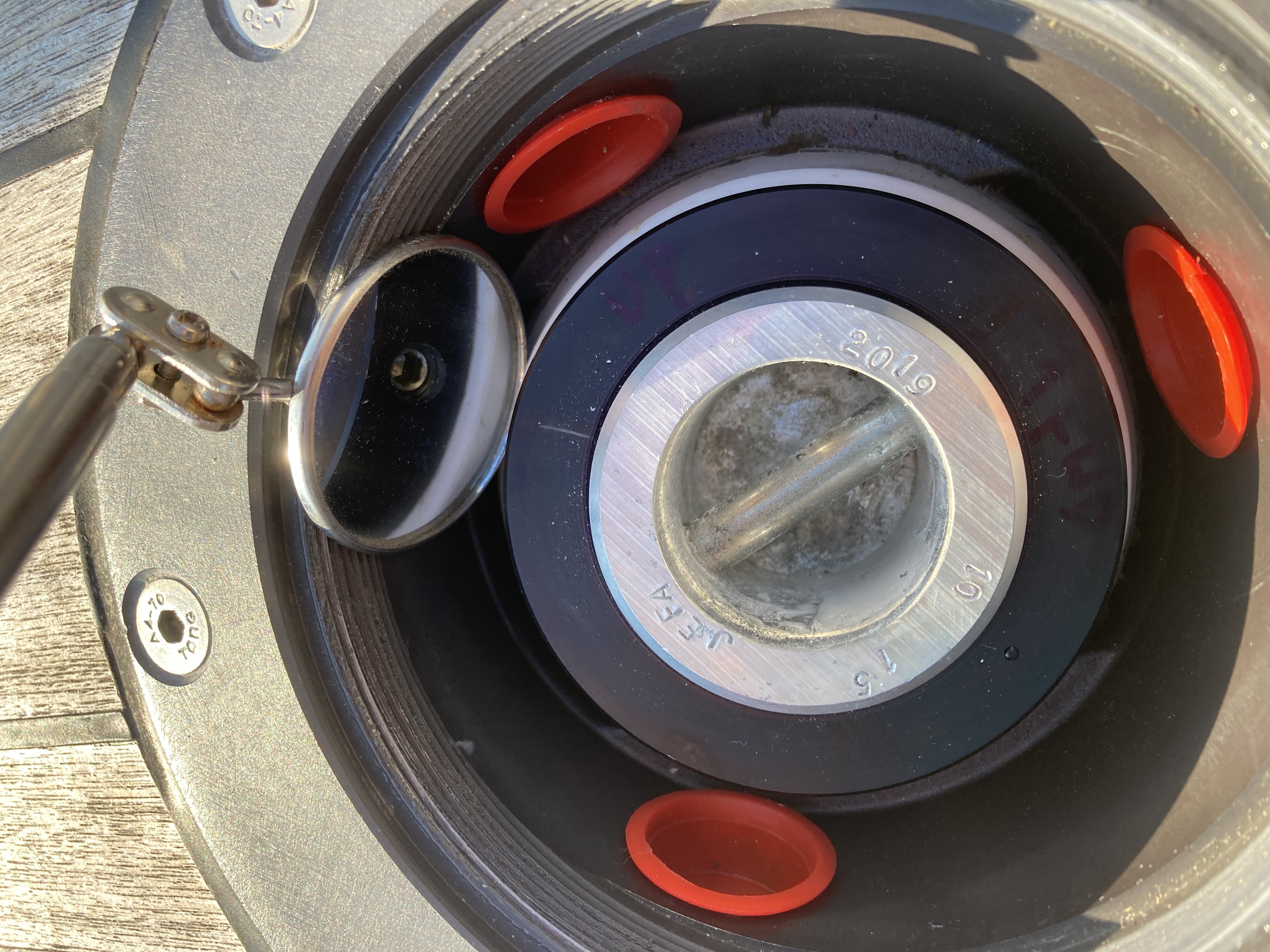Keep the Rudder in the Boat
Correct Use of a Locking Ring
“Safety Moments, presented at CCA Stations and Posts”
By Dave Dickerson, Essex
If your boat is equipped with a Jefa rudder system, the design may be the type with a locking ring located above the top bearing to prevent the rudder from sliding out of the vessel. Note: the following discussion is also applicable to boats with dual wheel steering and a single rudder.
The locking rings are made of anodized aluminum and contain three stainless steel set screws to achieve “a perfect locking on the shaft.” The Jefa installation instructions call for pre-drilling the rudder stock a couple of millimeters, at the set screw locations, to ensure “durable locking ring security.”
In 2022 and 2023, we discovered four boats equipped with a Jefa rudder system, where the step for pre-drilling the set screw locations had not been performed.
During initial construction, once the rudder assembly is fully installed and aligned with the steering quadrant, the autopilot linkage, etc., the rudder should be lowered and the impressions from the locking ring set screws should be pre-drilled a couple of millimeters. This allows the set screws, when properly tightened, to be indented into the rudder stock, thus greatly improving their effectiveness.
Inspection of locking ring/set screws:

It’s relatively easy to determine if the set screw contact points on the rudder stock have been pre-drilled. A metric Allen wrench, a small mirror and a short piece of 1/4” line will be needed. This can be checked with the boat in the water or on the hard.
Access to the locking ring is obtained by unscrewing the cover plate above the top of the rudder stock (i.e., the cover plate that is removed to insert the emergency tiller).
As a precaution, before the inspection, it is suggested that a line be attached to the pin at the top of the rudder stock (i.e., the engagement pin for the emergency tiller) and tensioned to something overhead, like the boom, to prevent the rudder from falling in case one or more of the set screws are already loose. If on the hard, simply block the bottom of the rudder. Note: we discovered the locking ring problem on a boat that was in the water, preparing for the 2022 Bermuda Race, and one of the set screws was totally loose.
Next, for obvious reasons, it’s a good idea to check if any of the set screws are already loose. To determine if the set screw locations have been pre-drilled, it will be necessary to remove one of the screws. Using a mirror, look down the hole in the locking ring, it should be easy to see if the contact point has been pre-drilled.
Pre-drilling the rudder stock:

If the contact point(s) have not been pre-drilled, it’s not an easy task. Removing the rudder will most likely be necessary. First, check the contact points to ensure there is an impression on the rudder stock. The correct position of the locking ring is determined after the rudder is fully inserted. Note: there may be a Delrin ring/spacer at the hull.
Removing the rudder may require that the boat be lifted. (Fortunately, we were able to dig a hole, about 2 feet, under the rudder). Careful manipulation of the rudder and steering quadrant is necessary; match marking the alignment of parts to get things back to the proper orientation. It is suggested that this rework be conducted by a boatwright or a boatbuilder.
If this turns out to be a generic problem, perhaps some sort of ingenious drilling gig could be made so the rudder doesn’t have to be removed. A concern is access for the drill and how to keep the drill chips out of the bearings.
The Cruising Club of America is a collection of accomplished ocean sailors having extensive boat handling, seamanship, and command experience honed over many years. “Safety Moments” are written by the Club’s Safety Officers from CCA Stations across North America and Bermuda, as well as CCA members at large. They are published by the CCA Safety and Seamanship Committee and are intended to advance seamanship and safety by highlighting new technologies, suggestions for safe operation and reports of maritime disasters around the world.






